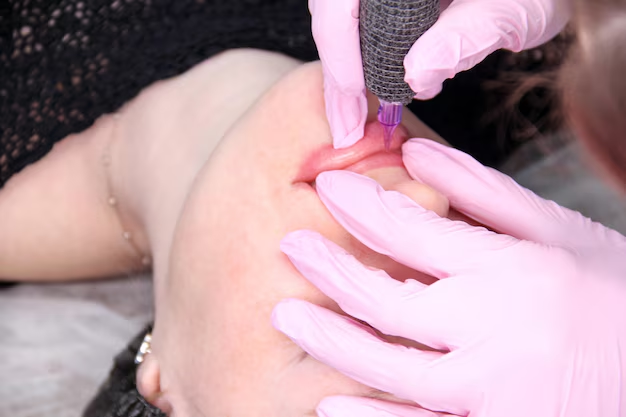Understanding Shingles: What You Need to Know for Effective Relief
Imagine waking up to a tingling sensation on your skin, followed by a rash that gradually becomes a painful and burning blister. If you've experienced this, you might be dealing with shingles, a common yet often misunderstood viral infection. Many people find themselves asking, "How do I get rid of shingles?" While there is no immediate cure, understanding the condition and how to manage its symptoms can substantially ease the discomfort. Let’s explore shingles, delving into effective management strategies, symptoms, and common questions to empower you with helpful knowledge.
What is Shingles?
Shingles, medically known as herpes zoster, is a painful rash caused by the varicella-zoster virus (VZV), the same virus responsible for chickenpox. After recovering from chickenpox, the virus remains inactive in the nervous tissue but can reactivate later as shingles. Unlike chickenpox, shingles doesn't spread over the whole body but usually appears as a single stripe of blisters on one side of the body.
Key Symptoms to Watch For
- Pain and Tingling: Often the first sign, pain can vary from mild itching or tingling to intense burning.
- Rash: Typically develops a few days after pain begins, presenting as red patches followed by clusters of fluid-filled blisters.
- Sensitivity: Skin around the rash may become sensitive to touch.
- Other Symptoms: Some people experience fever, headache, or fatigue.
What Triggers Shingles?
Shingles can be more common in older adults or those with weakened immune systems. Factors like stress, certain chronic diseases, or immune-suppressing medications can increase the likelihood of an outbreak. If you’ve had chickenpox, the dormant virus can reactivate when your immune defenses drop.
Managing Shingles: Relief and Recovery
Although there is no outright cure for shingles, several measures can help manage symptoms and speed up recovery. Here are some effective approaches:
Antiviral Medications
One of the primary medical treatments for shingles involves antiviral drugs, which can:
- Shorten the duration of the virus
- Lessen the severity of the outbreak
- Prevent complications, including postherpetic neuralgia, a persistent pain condition
These medications are most effective when started within the first 72 hours of symptom onset, so swift action is advisable.
Pain Management
Dealing with shingles often involves managing pain, which can be quite severe. Various options include:
- Over-the-counter pain relievers: Ibuprofen or acetaminophen can provide temporary relief.
- Prescription medications: For more severe pain, doctors may prescribe stronger painkillers or nerve blocks.
- Topical treatments: Creams containing capsaicin or lidocaine can reduce discomfort.
Home Remedies and Self-Care
Implementing home remedies can also provide soothing relief:
- Cool compresses: Applying damp, cool cloths can alleviate itching and discomfort.
- Oatmeal baths: A soothing oatmeal bath can provide relief to irritated skin.
- Loose-fitting clothing: Wearing comfortable, cotton clothing helps prevent irritating the affected area.
Prevention of Spreading
While shingles isn’t as contagious as chickenpox, the blisters do contain the virus. Simple measures can prevent spreading it to those who’ve never had chickenpox:
- Cover the rash: Keep it clean and dry.
- Avoid contact: Especially with those who are pregnant, infants, or anyone with a compromised immune system.
Vaccination: A Preventative Measure
A shingles vaccine can significantly reduce the risk of developing shingles. It's generally recommended for adults over 50, and those with certain health conditions can also benefit from vaccination. The vaccine can lessen the intensity and duration of the illness and decrease the risk of complications.
Types of Vaccines
- Shingrix: A two-dose vaccine that provides strong protection.
- Zostavax: An older version, available in some locations but with lower efficacy compared to Shingrix.
Coping with Shingles: Emotional and Psychological Aspects
Beyond the physical discomfort, shingles can also take an emotional toll. Pain and itching may lead to insomnia, stress, and anxiety, affecting daily life. Addressing the mental impact is as crucial as managing the physical symptoms.
Practical Tips for Emotional Relief
- Mindfulness and Meditation: Can help in stress management.
- Support Groups: Sharing experiences with others can alleviate feelings of isolation.
- Professional Support: Speaking with a counselor or therapist provides invaluable support.
Answers to Common Questions
How Long Does Shingles Last?
Typically, shingles last between two to four weeks. However, complications like postherpetic neuralgia can cause prolonged pain.
Can You Get Shingles More Than Once?
While it’s uncommon, some people may experience shingles more than once. This underscores the importance of a healthy lifestyle and, if recommended by a healthcare provider, vaccination.
Is Shingles Contagious?
Direct contact with the rash can spread the virus to someone who’s never had chickenpox, potentially causing chickenpox in that individual. Covering the rash and practicing good hygiene reduces this risk.
Moving Forward: Embrace Proactive Health Practices
Understanding shingles and how to manage it can play a pivotal role in lessening its impact. Embracing a healthy lifestyle, recognizing early symptoms, and seeking appropriate medical care are critical components. Regardless of your history with chickenpox, being informed equips you to take control if shingles appear.
As with many health concerns, early intervention can lead to a more manageable experience. Being alert to your body's signals and maintaining regular communication with healthcare professionals enhances not only your physical well-being but your peace of mind as well.
Key Takeaways and Practical Tips for Shingles Relief 🏡
- Recognize Symptoms Quickly: Early signs include pain followed by a rash. Act fast!
- Consider Antiviral Medications: Start within 72 hours of symptom onset for best results.
- Manage Pain Effectively: Utilize over-the-counter options or prescribed medications.
- Implement Home Remedies: Oatmeal baths and cool compresses can bring relief.
- Practice Good Hygiene: Keep the rash covered to prevent spreading the virus.
- Consult About Vaccination: If you're eligible, vaccines can reduce your risk.
Understanding and addressing shingles proactively can make a world of difference. Stay informed and prioritize your health to navigate shingles with confidence. 🌟
